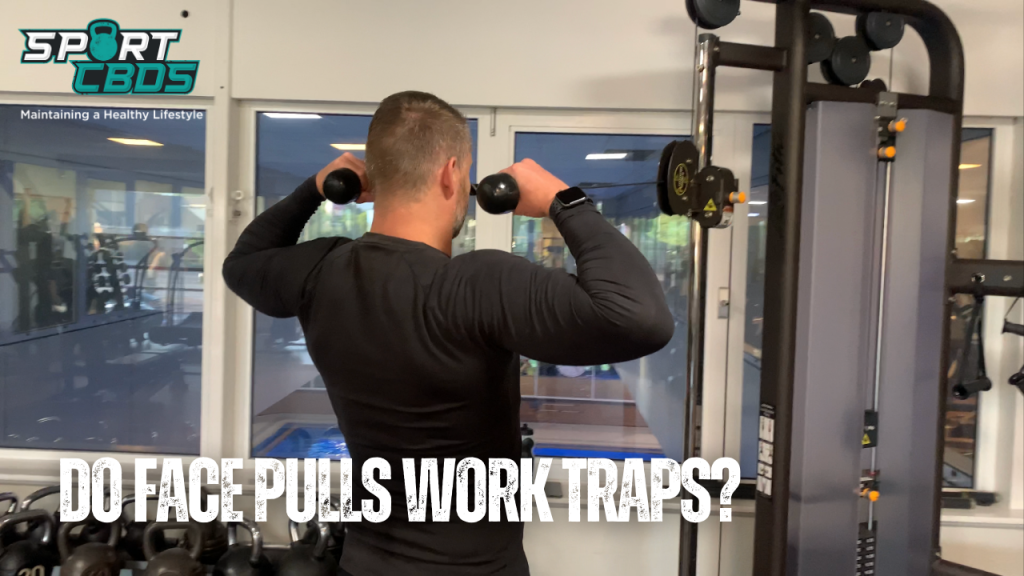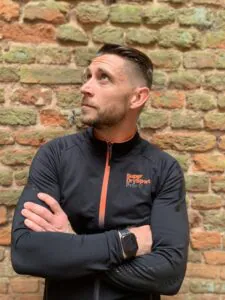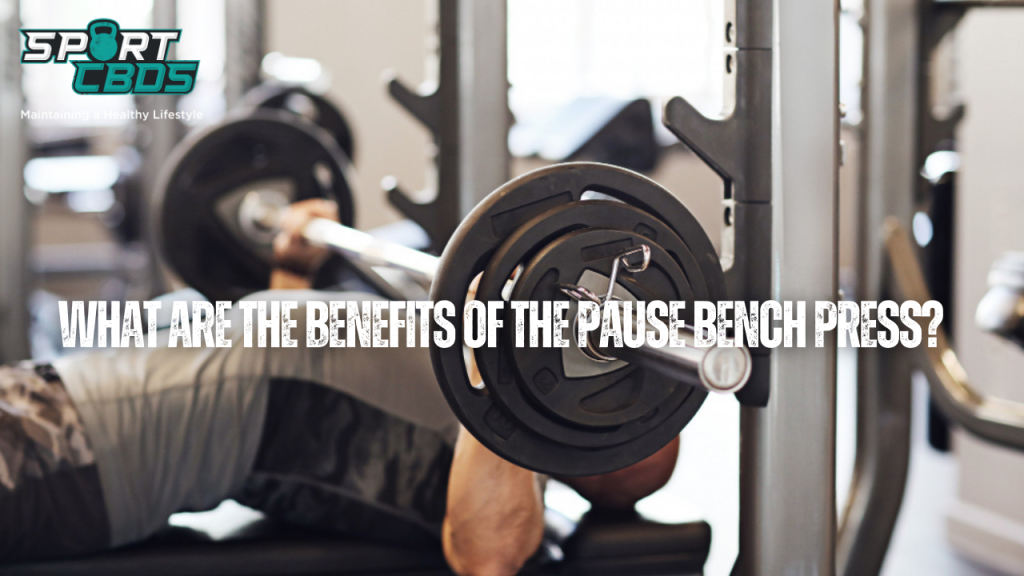
Do Face Pulls Work Traps? Everything You Need To Know
Have you ever admired someone at the gym, with a solid back and shoulders, and wondered what their workout routine involves? One of their secret techniques might be the face pull.
This potent but often underrated exercise targets various back muscles, especially focusing on the trapezius, or traps, as most of us know them.
So, what exactly is a face pull? How does it function? And, does it genuinely aid in shaping your traps? Let’s delve into this.
Do Face Pulls Work Traps?
Face pulls indeed work the traps, or trapezius muscles, effectively, along with other muscles like the rhomboids and rear deltoids. These exercises are unique in their design and execution, focusing on the often neglected muscles that contribute to a powerful upper body and an aesthetically pleasing V-shape. This is achieved by the horizontal pulling motion, which unlike vertical pulling exercises like pull-ups, engages different muscle fibers in your back, contributing to overall muscular balance. The key is to pull at eye level, not towards the chest, in order to engage the target muscles fully. Grip and equipment are crucial elements, with a preference for an overhand grip and the use of cable machines or resistance bands. Incorporating face pulls into your regular workout routine can result in improved back development, better posture, and increased upper body stability. When executed correctly, face pulls have been reported to aid in creating a more muscular and chiseled back and shoulders, proving their effectiveness in working the traps.
Understanding the Face Pull
To the untrained eye, face pulls might seem like another row exercise variant. However, they are considerably more. They engage multiple muscles such as the rhomboids, deltoids, and indeed, the traps. Face pulls significantly stimulate the traps and deltoids, so in essence, they activate all muscles contributing to a sturdy upper back and enhanced posture.
I used to focus more on my chest and arms, often neglecting my upper back. However, when I introduced face pulls into my routine, I observed considerable growth in my traps, my posture improved, and my overall upper body strength experienced a boost.
The Effectiveness of Face Pulls
So why choose face pulls? The charm of this exercise lies in its simplicity and potency. By including face pulls in your workout, you’re not merely working on your traps; you’re also enhancing your posture and stabilizing your upper body. Your V-shaped back begins to appear more sculpted, and that’s a goal everyone strives for.
However, the advantages aren’t solely aesthetic. A robust upper body and improved posture equate to better performance in other weightlifting exercises and reduced chances of shoulder injuries. Particularly for those with desk jobs, face pulls can counteract the bent posture that frequently accompanies such work.
The Contrast Between Vertical and Horizontal Pulling
Regular gym-goers are likely familiar with vertical pulling exercises like pull-ups and lat pulldowns, where the resistance originates from above. However, face pulls are categorised as horizontal pulling exercises, where the resistance comes from the front. This slight change in direction stimulates different muscle fibres in your back, fostering overall muscular balance.
The secret lies in the angle of the pull. In face pulls, pulling at eye level emphasizes the middle and upper back muscles, including the traps. One common mistake is pulling towards the chest, which lessens the engagement of these muscles. Aim for the face, not the chest.
The Importance of Grip and Equipment
Let’s discuss the grip and equipment, two essential components for an effective face pull. Whether you’re using a rope attached to a cable pulley or a resistance band, an overhand grip where your palms face the ground is ideal. However, the grip width can change based on your comfort and the specific muscles you aim to engage. A broader grip will activate more of the upper back, while a narrower grip will concentrate more on the rear delts.
Regarding equipment, cable machines and resistance bands are frequently used for face pulls. Each has its strengths and weaknesses. Cables maintain constant tension throughout the movement, while bands provide increased resistance at the peak contraction point.
Related: Why Is Shoulder Press So Hard To Progress?
Executing the Face Pulls: A Step-by-Step Guide
Proper execution of face pulls is crucial to unleash their potential. Here’s a straightforward step-by-step guide:
- Fasten a rope to a cable machine at approximately head height.
- Stand a few steps back, keeping your feet at shoulder-width apart.
- Pull the rope towards your face, parting your hands as you do so.
- Make sure your elbows remain elevated than your hands throughout the movement.
- Gradually return to the initial position and repeat.
Here is where individuals often falter: they tend to pull towards their chest or neck, thereby reducing the effectiveness of the exercise. Remember, you’re performing a face pull, not a chest or neck pull.
Perfecting the Face Pull
In order to perfect the face pull, make sure to sidestep common mistakes such as pulling towards your chest, using too much momentum to jerk the weight, and allowing your elbows to drop down. Don’t stress if you’ve been making these errors – getting the technique right comes with time and practice. Soon enough, you’ll have the method down pat and be ready to experience the benefits firsthand.
The Different Varieties of Face Pulls
When you’ve grown comfortable with the basic face pull, it’s worth introducing some variety into your workout. There are several different techniques and alternative exercises that work the traps just as well. Here are a few to get you started:
Seated Face Pulls: Performed while seated on a low row machine, this variation isolates the upper body and helps to prevent momentum use.
Banded Face Pulls: This exercise can be performed virtually anywhere and is an excellent choice when a cable machine is unavailable.
Reverse Flyes: Not strictly a face pull, but reverse flyes are also effective in targeting the rear delts and traps. Integrating Face Pulls into Your Workout Regime
So, you’re convinced about the advantages of face pulls and you’re ready to make them part of your workout routine. The good news is, face pulls are extremely versatile and can be added to any upper body workout. For instance, consider including them on your pull day, or use them as a warm-up routine before executing heavy overhead lifts.
Test Your Traps With This Workout
Here’s a comprehensive traps workout that includes face pulls:
1. Barbell Shrugs
- Sets: 4
- Reps: 8-10
Stand tall with your feet hip-width apart and hold a barbell in front of your thighs with an overhand grip, hands slightly wider than shoulder-width. Keeping your core braced and your back straight, shrug your shoulders up towards your ears. Hold for a second at the top, then lower the barbell back down.
2. Dumbbell Shrugs
- Sets: 4
- Reps: 10-12
This exercise is similar to the barbell shrug, but it’s performed with dumbbells. Hold a pair of dumbbells at your sides, palms facing your body. Shrug your shoulders up towards your ears, hold for a second, then lower the dumbbells back down.
3. Face Pulls
- Sets: 4
- Reps: 12-15
Attach a rope to a high pulley on a cable station. Standing a few feet back from the machine, grab the ends of the rope with an overhand grip and pull it towards your forehead, keeping your elbows higher than your hands. Return to the starting position and repeat.
4. Wide-Grip Pull Ups
- Sets: 3
- Reps: 8-10
Grab a pull-up bar with your hands wider than shoulder-width apart and palms facing away from you. Pull yourself up until your chin is above the bar, then lower yourself back down with control.
5. Upright Rows
- Sets: 4
- Reps: 10-12
Hold a barbell with an overhand grip, hands slightly narrower than shoulder-width apart, and let it hang in front of your thighs. Keeping the bar close to your body, pull it up towards your chin, leading with your elbows. Lower the bar back down to the starting position.
6. Reverse Cable Flyes
- Sets: 4
- Reps: 12-15
Stand between two pulleys set to shoulder height. Grab the left handle with your right hand and the right handle with your left hand, crossing them in front of you. With a slight bend in your elbows, pull the handles out to your sides until your arms are parallel with the floor. Return to the starting position and repeat.
7. Lower Trap Raises
- Sets: 3
- Reps: 12-15
Lie facedown on a 45-degree incline bench with a dumbbell in each hand, arms hanging straight down and palms facing each other. Keeping your arms straight, raise the weights out to your sides and up as high as you can. Lower the dumbbells back down and repeat.
Remember to start each workout with a warm-up to prepare your muscles and end with a cool-down to help your body recover. Always maintain proper form to avoid injury and maximise effectiveness.
Related: Why Are My Shoulders So Narrow?
Over to You!
Ever tried face pulls? How have they impacted your trap development and overall upper body strength? We invite you to share your experiences or ask any questions in the comment section below. Let’s create a community of fitness enthusiasts who grow and learn together. Keep lifting, stay fit!
FAQs
How do you hit traps with face pulls?
Face pulls engage the traps by pulling the resistance directly towards your face at eye level. This is achieved by using an overhand grip with your palms facing down, pulling the rope apart and towards your face while keeping your elbows higher than your hands.
What muscles do face pulls work out?
In addition to the trapezius muscles (traps), face pulls also work out the rear deltoids and rhomboids. They also engage the core to some degree, offering a comprehensive workout for the upper body.
Can face pulls replace shrugs?
While face pulls do target the traps effectively, they’re not an exact replacement for shrugs, which more directly isolate the traps. Both exercises can be part of a balanced and comprehensive upper-body workout routine.
Do face pulls work middle and lower traps?
Face pulls primarily target the upper traps and the rear deltoids. However, they also engage the middle traps to some degree. The lower traps aren’t as directly targeted by face pulls; other exercises such as lower trap raises would be more effective for that area.
Which pull up is best for traps?
The wide-grip pull up is often considered the most effective for engaging the traps. In this exercise, the wider grip forces your traps and rear deltoids to work harder to lift your body weight, thereby offering a more focused workout for these muscles.
Do traps respond better to high or low reps?
It’s best to use a combination of both high and low reps for balanced trap development. High reps (12-15) with lower weights can help improve muscle endurance and tone, while low reps (6-8) with heavier weights can promote muscle growth and strength. As with all exercises, proper form is crucial to prevent injury and maximise effectiveness.
Final Thoughts…
The traps, although often overlooked, play a vital role in building a strong upper body and achieving a visually appealing V-shape. Face pulls are a distinctive and efficient exercise for targeting the traps, along with other muscles in the upper back.
By making them a part of your regular routine, you can improve your overall back development, posture, and stability in the upper body. Remember, the key is to pull to your face while maintaining the right form. Why not add face pulls to your next workout?
Do you find the shoulder press is hard to progress and have these tips helped? Let me know in the comments section below.
If you enjoy sports and use CBD to help with your recovery in between gruelling workouts, then you are in the right place. Here at Sport CBDs, we train hard and recover the best way possible…
We have regular workouts (check out the YouTube channel), CBD news and CBD products to help you gain that edge!
If you wanted to check out the reputable CBD we have on offer here at the site, then please head to the Sport CBDs Store (CLICK HERE). We also do fitness clothing and yoga accessories too.
Until next time, all the best…
Lee
Founder – Sport CBDs
Featured Image Attribution – Image by Freepik


